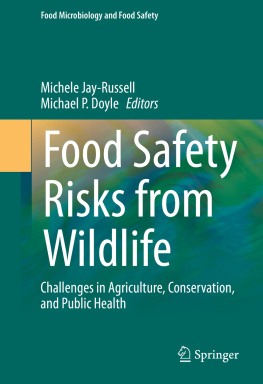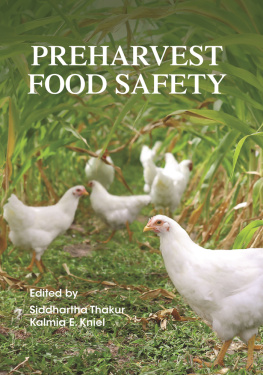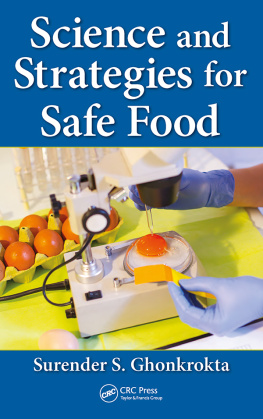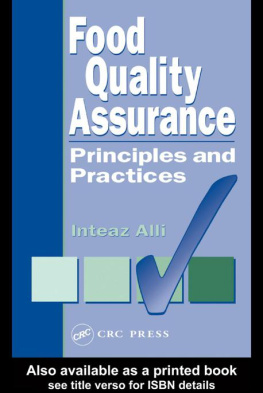
Table of Contents
List of Tables
- Chapter 02
- Chapter 03
- Chapter 05
- Chapter 06
- Chapter 07
- Chapter 08
- Chapter 09
- Chapter 11
- Chapter 12
- Chapter 14
- Chapter 15
- Chapter 17
- Chapter 18
- Chapter 19
- Chapter 20
List of Illustrations
- Chapter 01
- Chapter 02
- Chapter 03
- Chapter 04
- Chapter 05
- Chapter 06
- Chapter 07
- Chapter 08
- Figure 8.5 Ciguatera toxin from the dinoflagellate Gambriodiscus toxicus which is eaten by some tropical reef fish. LD50 [i.p*, mouse] = 0.45g/kg body weight; 30g could kill a human and 0.1g causes illness.
* Intraperitoneal injected into the abdominal cavity; it is considered by toxicologists to be similar to oral dosing.
- Chapter 09
- Chapter 10
- Chapter 11
- Chapter 12
- Chapter 13
- Figure 13.3 Results (n=7; meanSD) of an experiment in which BPA was added to the perfusion medium of an isolated human placenta* and 17estradiol (top) or BPA (bottom) levels measured on the fetal and maternal sides. This shows that there is much more 17estradiol on the maternal side which indicates that the placenta restricts its trasnsfer to the fetus, but that BPA passes across the placental barrier freely.
* A placenta obtained following a child's delivery. The placenta was kept alive by pumping synthetic blood through it containing oxygen and important nutrients (e.g. glucose) and chemicals were added to the perfusion medium and measured in the liquid that came out on the fetal side (i.e. equivalent to the fetal blood supply) and the perfusion medium on the maternal side at time intervals.
- Chapter 14
- Chapter 15
- Chapter 16
- Chapter 17
- Chapter 18
- Chapter 19
- Chapter 20
Guide
Pages
Food Safety
The Science of Keeping Food Safe
Second Edition
Ian C. Shaw
University of Canterbury
Christchurch
New Zealand
This edition first published 2018
2018 Ian C. Shaw
Edition History
WileyBlackwell (1e, 2012)
All rights reserved. No part of this publication may be reproduced, stored in a retrieval system, or transmitted, in any form or by any means, electronic, mechanical, photocopying, recording or otherwise, except as permitted by law. Advice on how to obtain permission to reuse material from this title is available at http://www.wiley.com/go/permissions.
The right of Ian C. Shaw to be identified as the author of this work has been asserted in accordance with law.
Registered Offices
John Wiley & Sons, Inc., 111 River Street, Hoboken, NJ 07030, USA
John Wiley & Sons Ltd, The Atrium, Southern Gate, Chichester, West Sussex, PO19 8SQ, UK
Editorial Office
The Atrium, Southern Gate, Chichester, West Sussex, PO19 8SQ, UK
For details of our global editorial offices, customer services, and more information about Wiley products visit us at www.wiley.com.
Wiley also publishes its books in a variety of electronic formats and by printondemand. Some content that appears in standard print versions of this book may not be available in other formats.
Limit of Liability/Disclaimer of Warranty
While the publisher and authors have used their best efforts in preparing this work, they make no representations or warranties with respect to the accuracy or completeness of the contents of this work and specifically disclaim all warranties, including without limitation any implied warranties of merchantability or fitness for a particular purpose. No warranty may be created or extended by sales representatives, written sales materials or promotional statements for this work. The fact that an organization, website, or product is referred to in this work as a citation and/or potential source of further information does not mean that the publisher and authors endorse the information or services the organization, website, or product may provide or recommendations it may make. This work is sold with the understanding that the publisher is not engaged in rendering professional services. The advice and strategies contained herein may not be suitable for your situation. You should consult with a specialist where appropriate. Further, readers should be aware that websites listed in this work may have changed or disappeared between when this work was written and when it is read. Neither the publisher nor authors shall be liable for any loss of profit or any other commercial damages, including but not limited to special, incidental, consequential, or other damages.
Library of Congress CataloginginPublication Data
Names: Shaw, Ian C., author.
Title: Food safety : the science of keeping food safe / by Ian C. Shaw.
Description: Second edition. | Hoboken, NJ : John Wiley & Sons, 2018. | Includes bibliographical references and index. |
Identifiers: LCCN 2017037700 (print) | LCCN 2017046184 (ebook) | ISBN 9781119133674 (pdf) | ISBN 9781119133681 (epub) | ISBN 9781119133667 (pbk.)
Subjects: LCSH: FoodAnalysis. | Food contamination. | FoodSafety measures.
Classification: LCC TX531 (ebook) | LCC TX531 .S5848 2018 (print) | DDC 664/.07dc23
LC record available at https://lccn.loc.gov/2017037700
Cover Design: Wiley
Cover Image: Sirirat/Shutterstock; wellphoto/Shutterstock; PhotoMediaGroup/Shutterstock
To David
Without whom my life would be incomplete.
Acknowledgements
Writing a book is both a great privilege and a daunting task. The invitation from my publishers to write the second edition of Food Safety The Science of Keeping Food Safe was signal that the first edition was well received (a relief!), but is no less daunting a task than writing the first edition (a challenge!). I like challenges and so I said, Yes! to WileyBlackwells invitation. Having reached the stage of writing the acknowledgements means that the challenge is over, which is another relief!
There are many people who deserve my thanks. The most important of these is David Zehms, my partner, to whom this book is dedicated. He provides stability, incredible support and cups of tea (both real and metaphorical) when I most need them; he read and commented on the new chapters in a way that only a teacher of English could.
I thank Dr Steve Marsh for his detailed and very helpful comments on .
Those who deserve thanks whom I have not mentioned personally know who they are thank you!
If you read the first edition of Food Safety, I hope you find the extra chapters in the second edition useful. If this is the first edition you have read, I hope it helps you to understand the science of food safety. And to all of you, I hope you enjoy my book as much as I enjoyed writing it.
Ian C. Shaw
Christchurch, New Zealand
Chapter 1
Introduction
Introduction
Food safety is a relatively recent invention. It was introduced in the developed world to increase confidence in food. In our modern world it simply is not acceptable to have food that might make us ill. Sadly even now a good proportion of the world's people are very much more concerned about getting food and stemming their unrelenting hunger than they are about whether they might get a stomach upset as a result of eating the food. We must always remember these horrifying facts when we study food safety. Food safety and the legislation emanating from it are for the relatively rich countries that have the luxury of having sufficient food to allow them to make rules about what is safe to eat.
Next page







